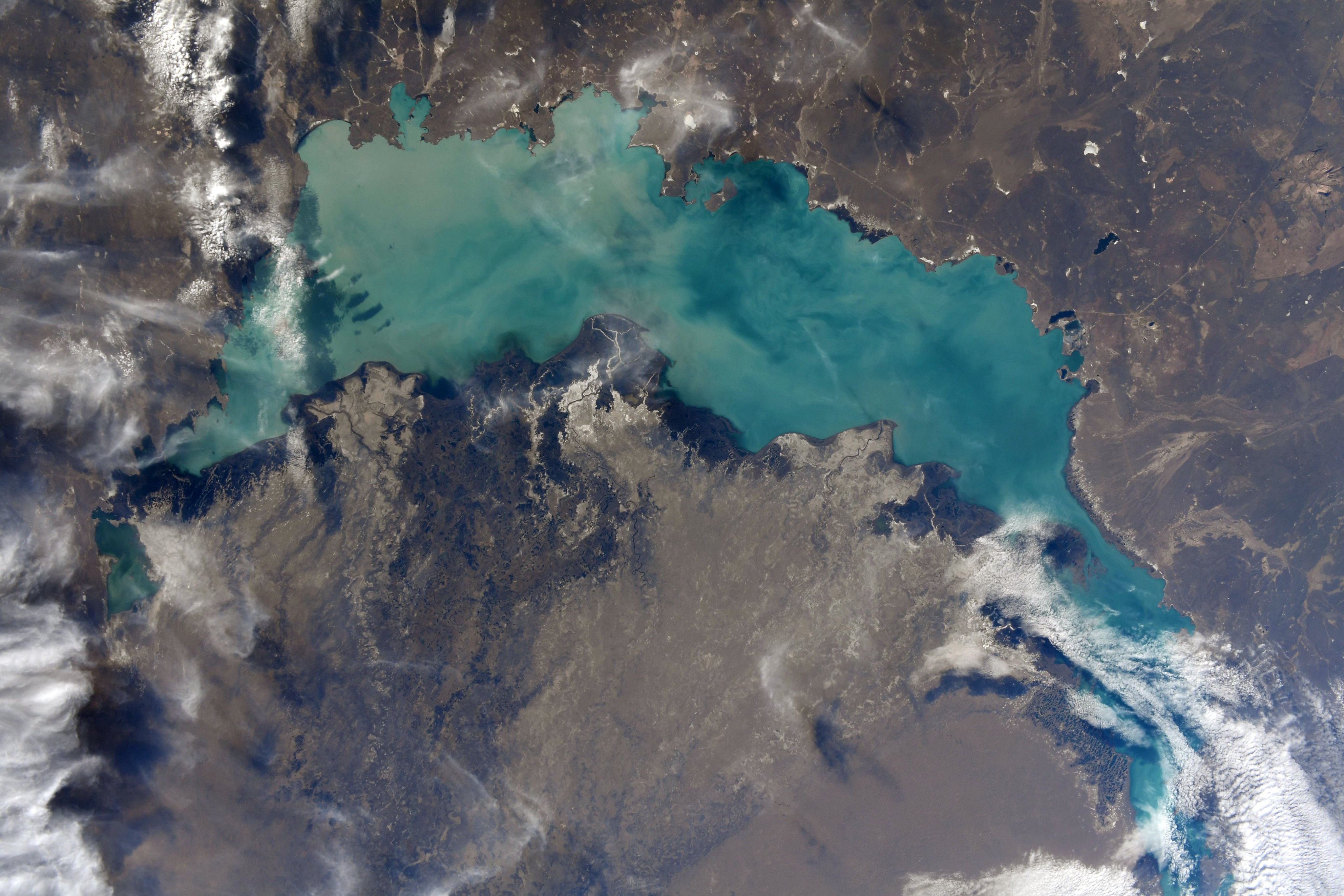[:ja]ジェシカ・メイヤー宇宙飛行士がISSから撮影したカザフスタンのバルハシ湖です。

バルハシ湖は、カザフスタン東部にある、央アジア最大の湖です(カスピ海は西アジアとヨーロッパと境にあり、中央アジアの湖ではありません)。かつてはアラル海のほうが広かったですが、アラル海の縮小・分裂により、バルハシ湖が中央アジア最大となりました。湖の西半分は淡水、東半分は塩湖で、流れ込む川はイリ川などがありますが、流れ出す川はなく、内陸湖です。11~4月中旬の間は氷結します。また、この地域は銅鉱石の採掘で有名です。
春のバルハシ湖の地上の様子はこちらです。

参考文献: Jessica Meir’s Tweet
地球俯瞰画像を見る: LiVEARTH
[Earthview Wonders] No.1007: Lake Balkhash🇰🇿
Astronaut Jessica Meir captured from ISS Lake Balkhash, Kazakhstan.

Lake Balkhash is the largest lakes in Central Asia, and belongs to an endorheic (closed) basin shared by Kazakhstan and China, with a small portion in Kyrgyzstan. The basin drains into the lake via seven rivers, the primary of which is the Ili River, bringing the majority of the riparian inflow. The Ili is fed by precipitation, largely vernal snowmelt, from the mountains of China’s Xinjiang region. Like the Aral Sea, it is shrinking as a result of the diversion of water from rivers that feed it. The lake is divided by a strait into two distinct parts. The western part is fresh water, while the eastern half is saline. The eastern part is on average 1.7 times deeper than the western section. Major economic activities in the area include mining, ore processing and fishing.
The local scenery on the ground of Lake Balkhash in spring is as follows.

Reference: Jessica Meir’s Tweet
See earthview photo gallery: LiVEARTH[:en][Earthview Wonders] No.1007: Lake Balkhash🇰🇿
Astronaut Jessica Meir captured from ISS Lake Balkhash, Kazakhstan.

Lake Balkhash is the largest lakes in Central Asia, and belongs to an endorheic (closed) basin shared by Kazakhstan and China, with a small portion in Kyrgyzstan. The basin drains into the lake via seven rivers, the primary of which is the Ili River, bringing the majority of the riparian inflow. The Ili is fed by precipitation, largely vernal snowmelt, from the mountains of China’s Xinjiang region. Like the Aral Sea, it is shrinking as a result of the diversion of water from rivers that feed it. The lake is divided by a strait into two distinct parts. The western part is fresh water, while the eastern half is saline. The eastern part is on average 1.7 times deeper than the western section. Major economic activities in the area include mining, ore processing and fishing.
The local scenery on the ground of Lake Balkhash in spring is as follows.

Reference: Jessica Meir’s Tweet
See earthview photo gallery: LiVEARTH[:]